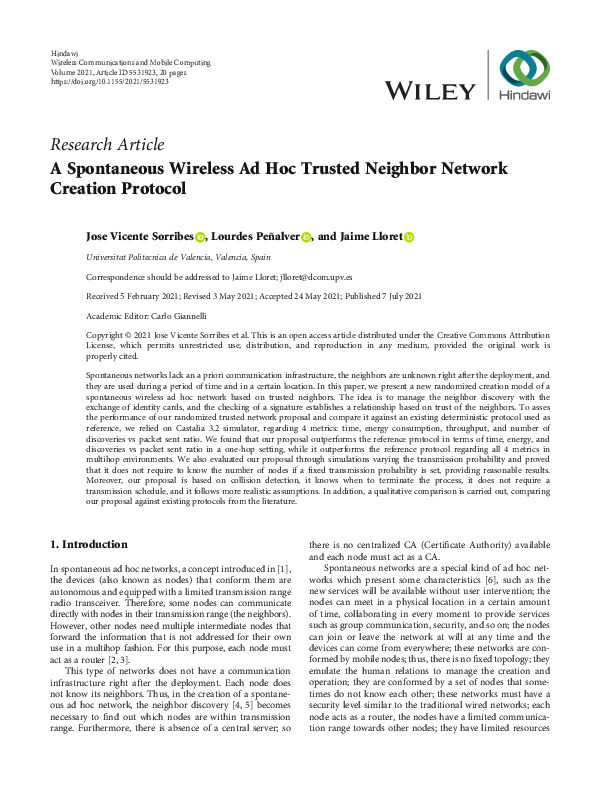JavaScript is disabled for your browser. Some features of this site may not work without it.
Buscar en RiuNet
Listar
Mi cuenta
Estadísticas
Ayuda RiuNet
Admin. UPV
A Spontaneous Wireless Ad Hoc Trusted Neighbor Network Creation Protocol
Mostrar el registro completo del ítem
Sorribes, JV.; Peñalver Herrero, ML.; Lloret, J. (2021). A Spontaneous Wireless Ad Hoc Trusted Neighbor Network Creation Protocol. Wireless Communications and Mobile Computing (Online). 2021:1-20. https://doi.org/10.1155/2021/5531923
Por favor, use este identificador para citar o enlazar este ítem: http://hdl.handle.net/10251/189072
Ficheros en el ítem
Metadatos del ítem
| Título: | A Spontaneous Wireless Ad Hoc Trusted Neighbor Network Creation Protocol | |
| Autor: | Sorribes, José Vicente | |
| Entidad UPV: |
|
|
| Fecha difusión: |
|
|
| Resumen: |
[EN] Spontaneous networks lack an a priori communication infrastructure, the neighbors are unknown right after the deployment, and they are used during a period of time and in a certain location. In this paper, we present ...[+]
|
|
| Palabras clave: |
|
|
| Derechos de uso: | Reconocimiento (by) | |
| Fuente: |
|
|
| DOI: |
|
|
| Editorial: |
|
|
| Versión del editor: | https://doi.org/10.1155/2021/5531923 | |
| Código del Proyecto: |
|
|
| Agradecimientos: |
This work has been partially supported by the "Ministerio de Economia y Competitividad" in the "Programa Estatal de Fomento de la Investigacion Cientifica y Tecnica de Excelencia, Subprograma Estatal de Generacion de ...[+]
|
|
| Tipo: |
|









